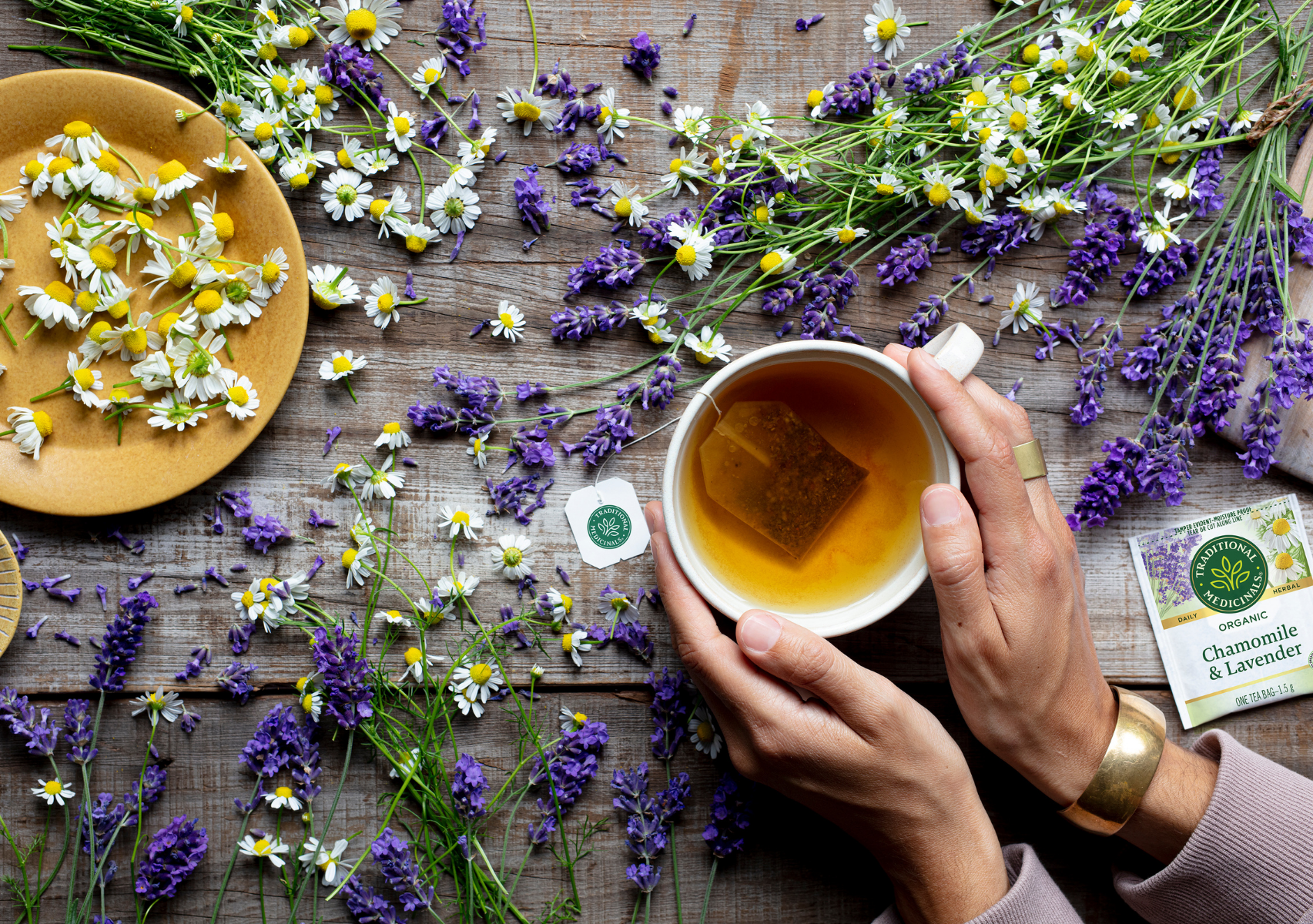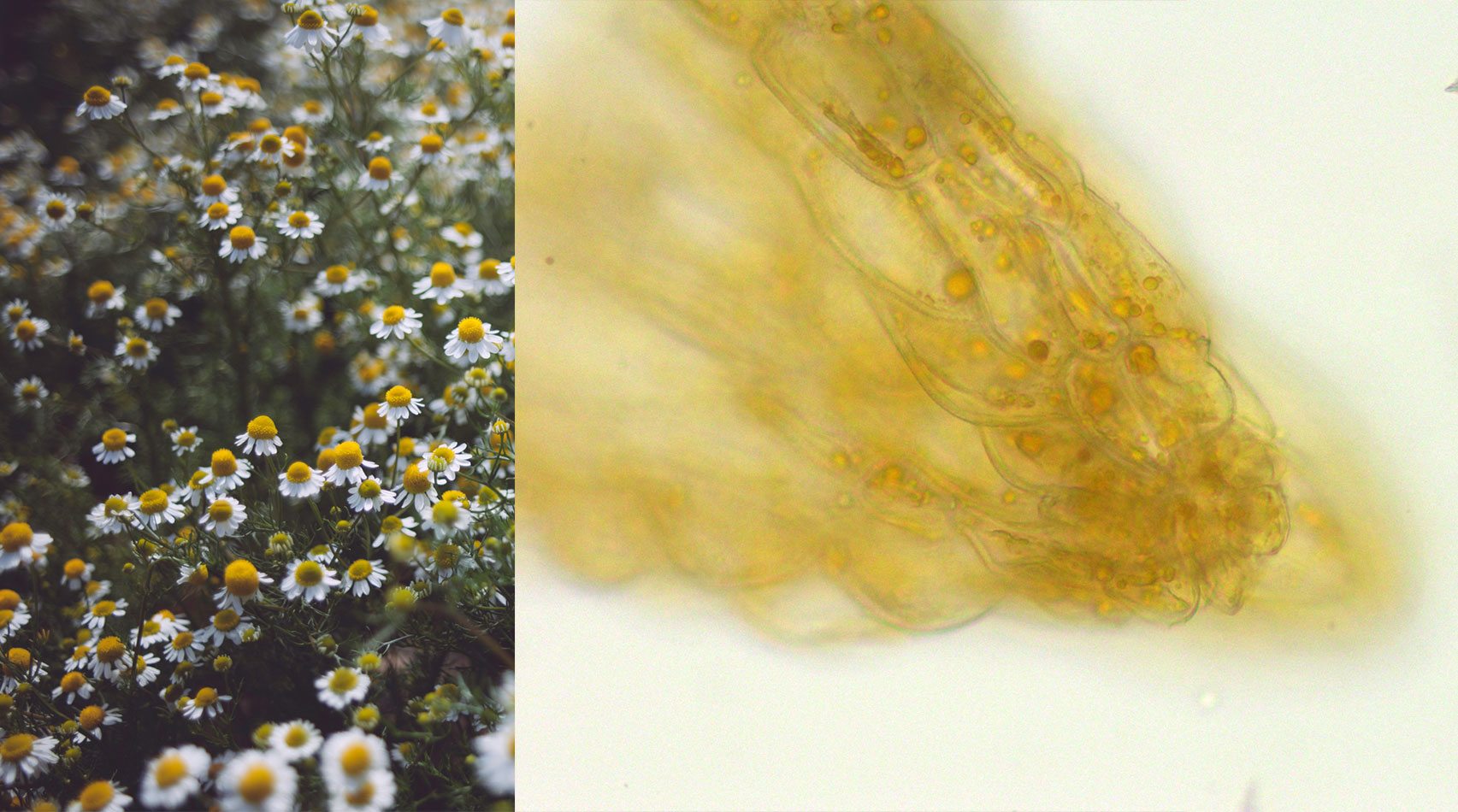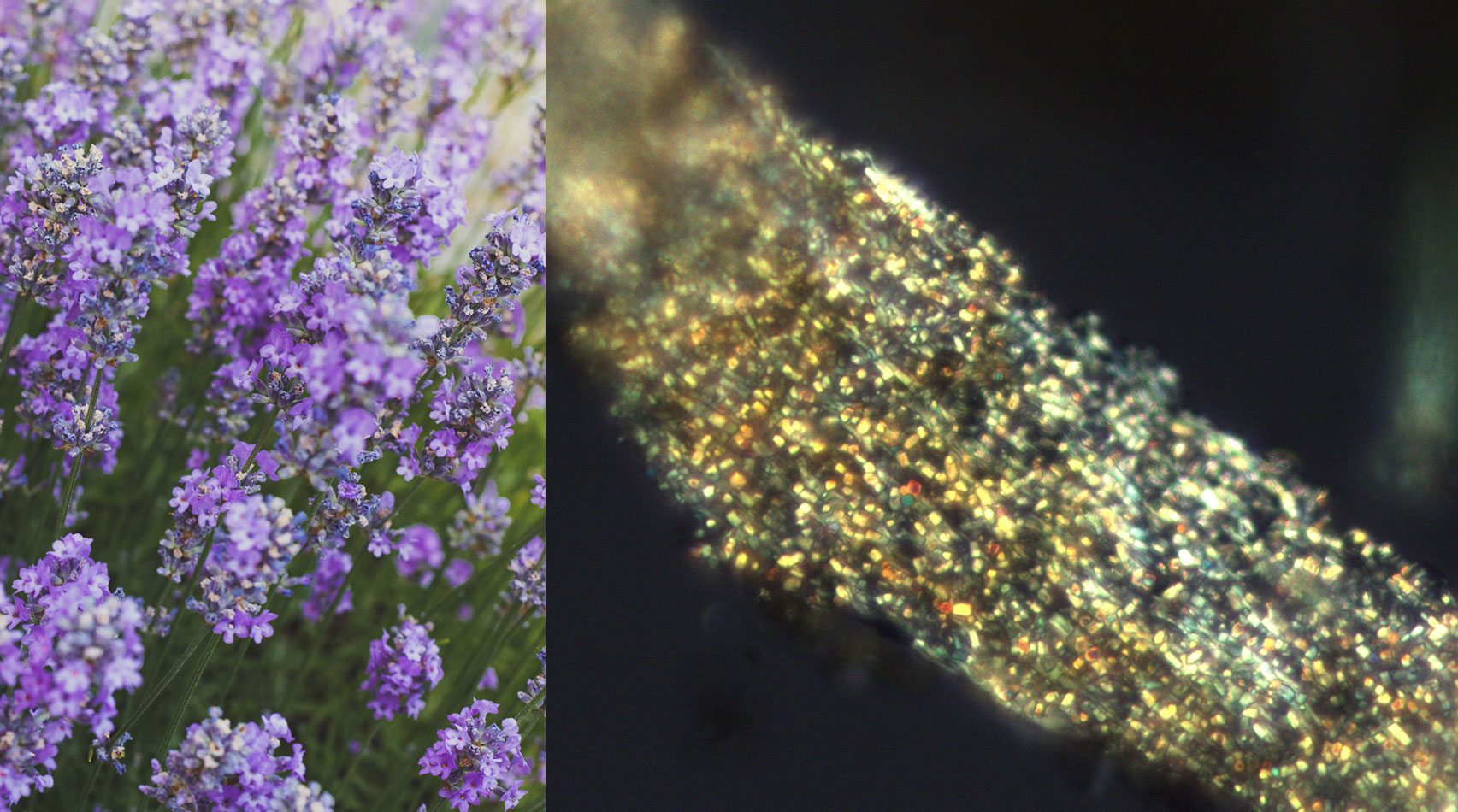While making a cup of tea may sound like a small task, calming rituals like these can create space for quiet reflection, reconnection with an old friend, or even nostalgia for times past. When crafting a perfect cup of tasty herbal tea, what better ingredients to include than our most fragrant, sweet, and herbaceous plant friends? There are probably no flowers more commonly known and adored than chamomile and lavender, which is why our herbalists at Traditional Medicinals have created a beautiful blend of these two flowers for our organic Chamomile with Lavender tea.
About a million cups of chamomile tea are consumed around the world every day, quite a wide reach for such a little flower. The earliest documentation of drinking chamomile as a decoction dates back to Dioscorides in the 1st century AD. Egyptians dedicated the power of chamomile to the sun and worshiped it above all other herbs. They offered it to their gods and used it as one of the main ingredients in their embalming oil for the mummification process. People in other cultures enjoyed chamomile while still living. Spaniards called the plant “manzanilla” which means “little apple,” and they infused the flowers into sherry.
Lavender also has a rich history of use. These fragrant purple blooms originally come from the Mediterranean region and have been used in food and drink for thousands of years by the ancient Greeks, Romans, Arabs and Egyptians. In the middle ages it was made into crosses and hung over doorways to ward off evil spirits. There are few flowers more adored by the bees than lavender, and its show-stopping, purple-flowering spikes have been a landscaping spectacle since antiquity. These days lavender essential oil is at the forefront of the natural products industry, as its intensely sweet herbaceous scent is added to aromatherapy diffusers, candles, lotions, soaps, mists, and so much more!

Our in-house botanical microscopist captures detailed images of our herbs through the lens of a microscope. This is just one of the many steps our quality control department takes to analyze our herbs. Below (from left to right) you can see chamomile flowers growing and then an image of the petal tissue. On the tissue there are oval like papillose cells and droplets of essential oils at the end of the petal. These essential oils create an herbal and fruity scent that is so distinctly chamomile; a scent that you may find nostalgic from years past when you were comforted by a cup of chamomile tea.

In this image below you see lavender and next to it a close up of prism crystals on its flower head, one of its main identifying features.

These two aromatic flowers are widely known and loved both across the globe, and right here in our Traditional Medicinals tea lab. Our Chamomile with Lavender tea is fragrantly floral and bittersweet, and has a touch of lemon balm to introduce a subtle note of refreshing citrus. And while we prepare these plants traditionally, there are many fun ways to infuse them into your daily life. You can enjoy chamomile lavender infused honey, lavender lemonade, lavender rosemary salt scrub, or a simple herbal footbath. We encourage you to get creative!





